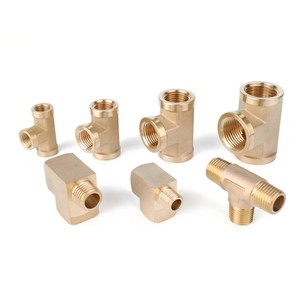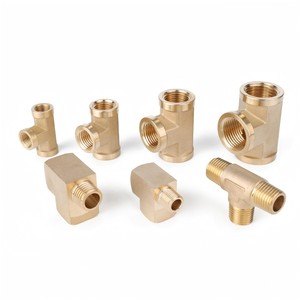
All categories
Featured selections
Trade Assurance
Buyer Central
Help Center
Get the app
Become a supplier

(86 products available)















































In the realm of construction and real estate, especially within the bathroom and kitchen sectors, plumbing hoses play a crucial role in ensuring efficient water management. These essential components are responsible for transporting water to various fixtures and appliances, maintaining the smooth operation of residential and commercial plumbing systems. The versatile nature of plumbing hose attachment allows them to be used in a wide range of applications, from connecting water supply lines to faucets and toilets to serving as flexible connectors for dishwashers and washing machines. The durability and flexibility of plumbing hose attachment make them an indispensable part of any plumbing setup, providing reliable performance in diverse environments.
The market offers a variety of plumbing hose attachment , each designed to meet specific needs and applications. Common types include stainless steel braided hoses, rubber hoses, and PVC hoses. Stainless steel braided hoses are known for their strength and resistance to corrosion, making them ideal for high-pressure applications. Rubber hoses offer flexibility and are often used in lower-pressure situations, such as connecting washing machines to water supplies. PVC hoses are lightweight and resistant to chemicals, making them suitable for a range of residential and commercial uses. The choice of plumbing hose attachment depends on factors such as pressure requirements, environmental conditions, and the type of fluid being transported.
plumbing hose attachment are designed to offer a range of features that enhance their functionality and reliability. Key features include flexibility, pressure resistance, and ease of installation. The flexibility of these hoses allows them to be easily maneuvered and installed in tight spaces, while their pressure resistance ensures they can handle varying water pressures without risk of bursting. Many plumbing hose attachment come with fittings and connectors that simplify the installation process, reducing the time and effort required to integrate them into existing plumbing systems. Additionally, some hoses are equipped with anti-kink technology to prevent twisting and tangling, ensuring consistent water flow and preventing potential damage.
The construction of plumbing hose attachment involves the use of various materials, each selected for its specific properties and benefits. Stainless steel, rubber, and PVC are among the most commonly used materials. Stainless steel offers exceptional strength and resistance to corrosion, making it a preferred choice for high-pressure applications. Rubber provides flexibility and resilience, allowing hoses to withstand bending and stretching. PVC is valued for its lightweight nature and chemical resistance, making it ideal for transporting a variety of fluids. The choice of material impacts the hose's durability, flexibility, and suitability for different environments, ensuring that plumbing hose attachment meet the demands of their intended applications.
To maximize the benefits of plumbing hose attachment , it's important to select the right type and size for the specific application. Consider factors such as water pressure, temperature, and the type of fluid being transported when choosing a hose. Proper installation is crucial to ensure the hose functions effectively and safely. This involves securing connections tightly to prevent leaks and positioning the hose to avoid sharp bends or kinks. Regular maintenance, such as checking for signs of wear and tear, can prolong the lifespan of plumbing hose attachment and prevent potential issues. In addition, understanding the manufacturer's guidelines and specifications can aid in the proper selection and use of these essential plumbing components.
Choosing suitable plumbing hose attachment for your plumbing needs involves several considerations to ensure optimal performance and longevity. First, assess the pressure requirements of your system. Different plumbing hose attachment are rated for varying pressure levels, and selecting one that matches your system's demands is crucial to avoid leaks or bursts. Temperature tolerance is another vital factor, particularly if your setup involves hot water. Some plumbing hose attachment are designed to withstand higher temperatures, making them more suitable for specific applications. Additionally, consider the compatibility with the fluid being transported, as some materials may react adversely with certain chemicals.
Length and diameter are also critical when selecting plumbing hose attachment . Measure the required length accurately to avoid unnecessary tension or slack, which can lead to wear and tear over time. The diameter should match the fittings and connectors in your plumbing system to ensure a secure and leak-free connection. Furthermore, consider the installation environment; if the plumbing hose attachment will be exposed to harsh conditions, opt for materials that offer enhanced durability and resistance to environmental factors.
Proper installation of plumbing hose attachment offers numerous benefits, including improved system efficiency and reduced risk of damage. When plumbing hose attachment are correctly installed, they provide a secure and stable connection, minimizing the likelihood of leaks. This not only conserves water but also prevents potential water damage to surrounding structures. Additionally, a well-installed plumbing hose attachment can enhance the overall performance of your plumbing system by ensuring consistent water flow and pressure.
Another advantage of proper installation is the extended lifespan of the plumbing hose attachment . By avoiding sharp bends or kinks and ensuring all connections are tight, you can prevent unnecessary stress on the hose, which can lead to premature failure. Regular inspection and maintenance further contribute to the longevity of plumbing hose attachment , allowing you to identify and address potential issues before they become significant problems.
Key factors include pressure and temperature ratings, material compatibility with the transported fluid, and the environment where the plumbing hose attachment will be installed. Length and diameter should also match the system's requirements for optimal performance.
Regular inspections of plumbing hose attachment are recommended, ideally every six months to a year, depending on the usage and environmental conditions. This helps in identifying wear and tear early, ensuring timely maintenance and replacement.
Yes, certain plumbing hose attachment are designed for both hot and cold water applications. It's important to verify the temperature rating of the hose to ensure it meets your specific needs.
Common signs include visible wear, cracks, leaks, or reduced water flow. If a plumbing hose attachment shows any of these signs, it should be replaced promptly to prevent further issues.
To extend the life of plumbing hose attachment , ensure proper installation, avoid sharp bends, regularly check for signs of damage, and follow the manufacturer's maintenance guidelines. Keeping the hoses clean and free from debris also helps maintain their condition.